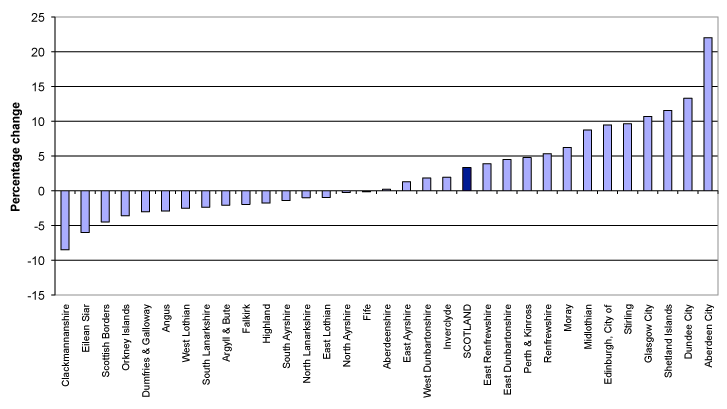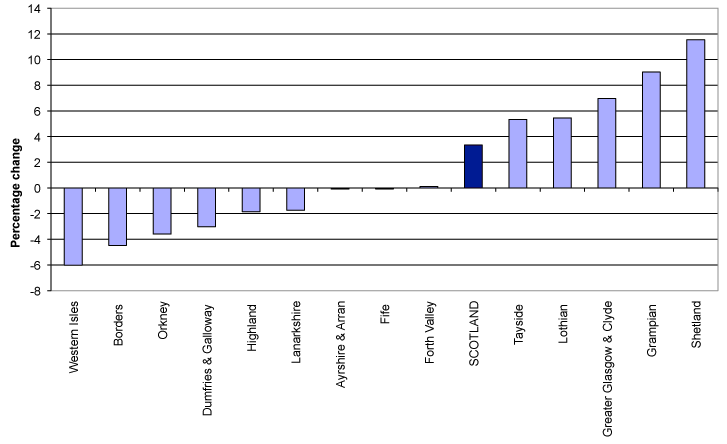
4.1 The differences between the latest sub-national projections and the previous 2008-based projections are summarised in Table 5 which compares the populations of administrative areas under the two projections at selected years (2010, 2015, 2020, 2025, 2030 and 2033).
4.2 The 2008-based projection showed Scotland's population to be 5.21 million by 2010 compared with the 2010 mid-year estimate of 5.22 million. The difference of about 10,700 is mainly due to more people migrating to Scotland than had been assumed. Scotland's population also grew more from natural change than projected. There were more deaths than projected but the increase in the number of births was large enough to cancel this out. By 2015 the difference between Scotland's population under the two projections increases to about 59,000, though some of the difference is accounted for by the higher starting population in 2010. The difference by 2020 is about 91,400 (from 5.39 million under the 2008-based projection to 5.49 million under the 2010-based projection). By 2025 the difference is about 125,300, by 2030 about 161,900, and by 2033 just over 185,000. There are relatively similar differences by administrative areas under the two projections. These differences are seen in Figure 8 and Figure 9 which show the percentage difference between the 2008 and 2010-based population projections in the population projected for 2033, which was the last year of the 2008-based projections. The projected population of Aberdeen City appears to have increased significantly from the 2008-based projection. This is due to a large increase in the migration observed in this area. The migration assumptions for Aberdeen City have been increased for this round and had been increased for the previous set of projections too. These differences highlight that projections become more uncertain the further ahead you go, and illustrate the value of producing new projections on a regular basis.
4.3 Figure 8 shows that, by 2033, the population of half of the Council areas is higher under the 2010-based projection than under the 2008-based projection. The biggest differences in the projected population for 2033 between the different sets of projections are in Aberdeen City, Dundee City and Shetland Islands. Figure 9 shows that by 2033 six NHS Boards have higher populations under the 2010-based projection, namely Shetland, Grampian, Greater Glasgow & Clyde, Lothian, Tayside, and Forth Valley. These changes have come about again because of the different starting point in the 2010 mid-year estimate and because of the changes to the fertility, mortality and migration assumptions. When looking at the comparisons between the projections it is important to bear in mind the uses and limitation of projections described in Section 2. More details about the assumptions can be found in Section 6.
Figure 8: Percentage difference between projected 2033 population using 2008-based and 2010-based projections, by Council area

Figure 9: Percentage difference between projected 2033 population using 2008-based and 2010-based projections, by NHS Board area
